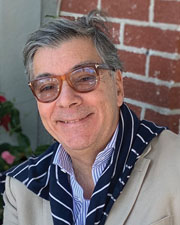
New York City is still feeling the effects of COVID - by Joseph Aquino

New York City has now lived through almost two years of the COVID-19 pandemic. I have been observing the effects of the restrictions that have consequently been imposed on this city, and it has been a horror show.
Speaking of shows, the area of Broadway around Times Square contains 41 major theatres. When they first re-opened, some of them temporarily enjoyed fully packed houses, although they served only vaccinated patrons. In early October, however, the Disney musical Aladdin had to close for two weeks after detecting additional breakthrough of COVID-19 cases. Now, the Time Square theatres have announced that by December they will review the “fully vaccinated patron” policy, since that policy can’t be maintained indefinitely, for all shows, if a theatre’s goal is to fill seats.
Having invested in five Broadway shows in the course of my career, I can tell you that even in good times it’s hard for any individual theatre to keep the white lights on—never mind all 41 of them. Theatre owners have a “go-dark clause” with their producers if the performances in these houses gross less than $500,000 in a week. Theatre performances—particularly in major houses where the actors, directors, and ancillary workers command high-priced contracts—must show a profit or not go on at all. These aren’t black-box theatres downtown, where no show can expect to do more than break even: This is “profit or perish.”
We’ll see whether Lincoln Center, the Metropolitan Opera, and other New York City venues will change their policies come 2022, but for now, only vaccinated patrons are admitted.
The same goes for retailers and restaurateurs. Only two commercial real estate operations come close to running at pre-pandemic levels these days: The restaurants that haven’t gone out of business, and the medical field. A client of mine—Michael Dorf, the owner of City Winery—tells me he has a “vaccinated-only” policy for admission to his many locations throughout the United States, and he says his customers feel safe in his venues. During this recent period, City Winery has revised its strategy for acquiring locations. City Winery stakes its success on building a reputation as an entertainment venue, hosting first- and second-tier musical artists in a nightclub setting, with full food and beverage service. The company also makes it own wine. In the past, City Winery would lease most of its 25,000- to 40,000-s/f locations, occasionally purchasing them when the right opportunities came along. Now, they are focusing only on purchasing locations. Why? Because the lenders were much kinder during the pandemic period, sometimes even becoming a partner, rather than foreclosing, if a mortgage went underwater. On the whole, these lenders showed far greater kindness than did some of the companies from which City Winery was renting.
Mr. Dorf emphasized that some of his landlords were kind and forbearing, but I suspect that their kindness depended upon the strength of the property owner’s balance sheet. As we all know, a lot of shuffling went on this year and some landlords just had to be tough. So, there we see another game-changer growing out of the pandemic: Lessees looking to become lessors.
Completing real estate deals in an urban environment has been challenging, to say the least, in the past year. I know that some of my friends that operate shopping malls, especially the bigger ones like Simon Property Group, have done well. Many of the smaller and weaker operators, though, have fallen. According to my sources, as much as 20% of the United States’ gross domestic product now comes from four or five companies. You can probably figure out for yourself why that’s not a good situation for the commercial real estate brokerage business.
The situation seems especially acute in New York City. The spread between what my restaurateurs and other retailers can pay, versus what property owners will settle on, averages about 30%. I understand that property owners don’t want to lock into post-pandemic rental rates, on a multi-year lease with only a 3% escalator—but we have to look at local and worldwide events and see where the customers are. New York City’s retailers depend on tourists, and an awful lot of them of them are still at home in Spain, Portugal, and Italy. Many of those people have been laid off of government jobs, or have been too ill (or intimidated) to travel.
(Meanwhile, countries like Japan and Korea have not shut down their economies. They have just put safety protocols into play, and they keep the ball rolling.)
Today, at any social function, we can add a third non-discussable item besides religion and politics: The worth of vaccinations. Feelings run high, on both sides of the debate on that subect. Many people remember the words of former secretary of state and national security adviser Henry Kissinger, to The World Health Organization Council, on Feb 25, 2009: “Once the herd accepts mandatory forcible vaccination, it’s game over! They will accept anything.”
Masks and booster shots, in my opinion, are like the massive security systems that were put into place at airports and office buildings 20 years ago following 9/11: They’re not going away. I expect I’ll still be rocking the mask and hearing about the latest booster shot when I’m ready to get my wings. I hear people saying that even when this pandemic is all officially over (if it ever is over, which I doubt, because it’s useful to some people), they will continue wearing masks, voluntarily. But I don’t think governments are going to relax their restrictions anytime soon.
Still, now that Labor Day is behind us, I see the pedestrian traffic has picked up considerably in Manhattan. Merchants in the Hamptons have resumed complaining, “Where did my business go?” If we don’t see another outbreak, we may achieve relative normalcy by the summer of 2022.
Joseph Aquino is president of JAACRES, New York, N.Y.